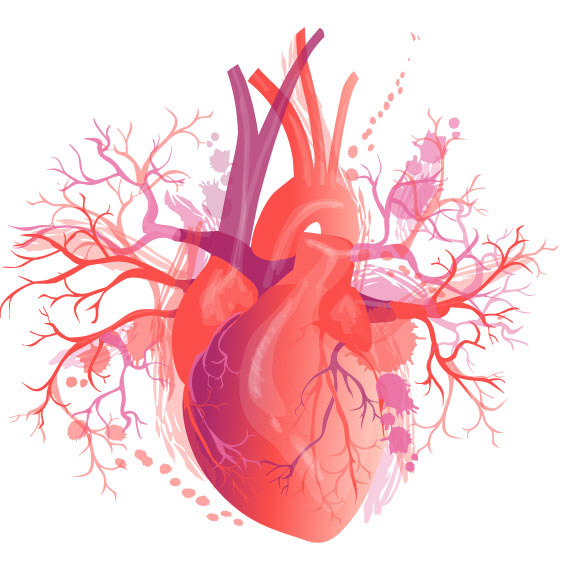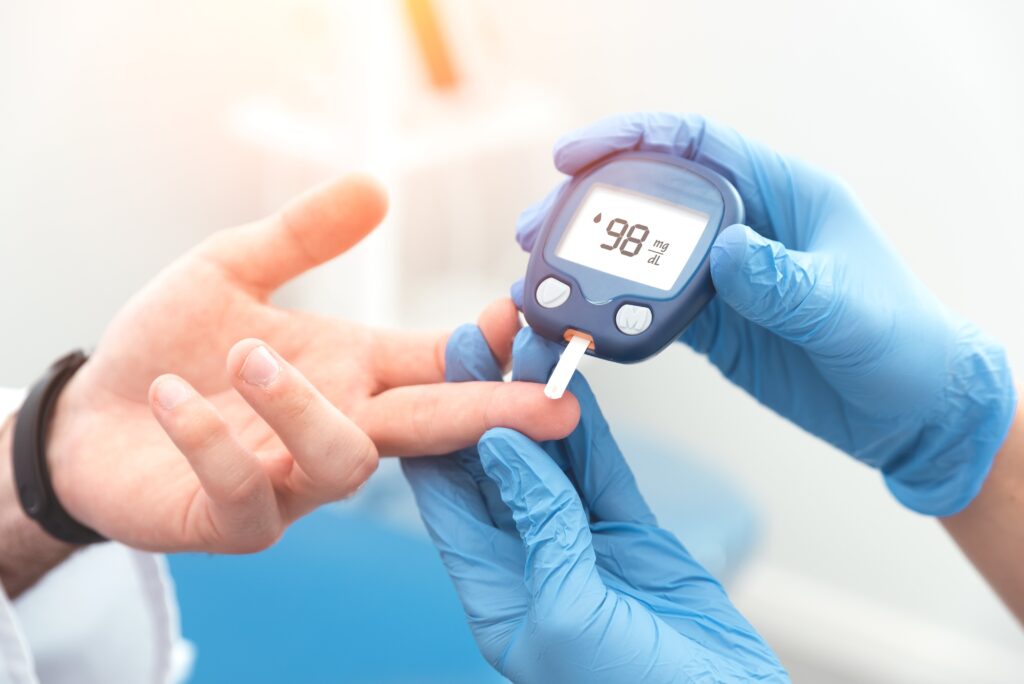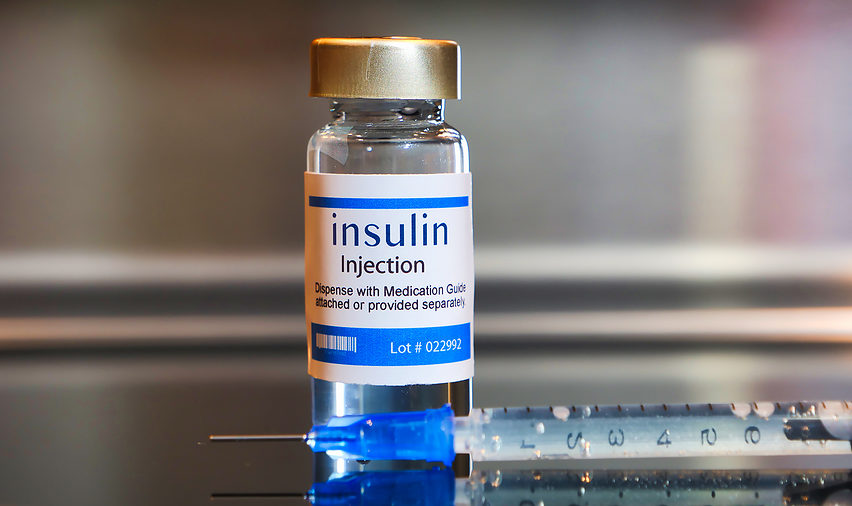
Cardiometabolic diseases are one of the greatest challenges we face. Our focus lies in countering the threat through innovative therapies and preventive solutions.
Challenges
Cardiovascular and metabolic (CVM) diseases are an ever-growing public health emergency. They impact at least half of the global population and significantly contribute to poor health and premature death. In addition, CVM diseases place huge direct and indirect costs on patients, their caregivers and society.
Despite numerous treatment options, the trajectory for people with CVM disease has not changed significantly – these conditions remain underdiagnosed, undertreated and poorly prioritised on national health agendas so their impact on society continues to grow and remains the largest burden to public health. Scientific understanding of the biology of CVM diseases continues to highlight their complex interplay confirming it is not a single ailment, but rather a spectrum of conditions and early intervention is crucial to prevent complications.
Cardiovascular disease
Cardiovascular disease is the number one cause of mortality, accounting for 31% of all global deaths—75% of which occur in low- and middle-income countries.
Cardiovascular disease (CVD) is a broad term for conditions affecting the heart and blood vessels, including coronary artery disease, heart failure, and stroke. It develops when plaque builds up in arteries (atherosclerosis), restricting blood flow and oxygen to vital organs. Major risk factors include high blood pressure, high cholesterol, smoking, diabetes, obesity, and physical inactivity—many of which develop silently over time. Warning signs like chest pain, shortness of breath, or leg swelling often appear only after significant damage occurs.

Understanding the disease
Early prevention is key. Lifestyle changes—such as a heart-healthy diet (rich in vegetables, whole grains, and lean proteins), regular exercise, and quitting smoking—can dramatically reduce risks. Medications like statins (cholesterol-lowering), beta-blockers (blood pressure control), and blood thinners help manage existing conditions. Advances in stents, bypass surgery, and minimally invasive procedures save lives, but awareness and proactive care remain the best defenses. By understanding CVD, you empower yourself to protect your heart before problems arise.
Most cardiovascular diseases can be prevented by addressing certain risk factors, such as tobacco use, unhealthy diet and obesity, physical inactivity, and harmful use of alcohol.However, the reality of many situations is that early warning signs are ignored and diagnostic solutions are required to inform appropriate intervention.
The use of tests to assess risk, screen, diagnose, predict, and monitor cardiac disease have been essential tools in protecting patients, helping to reduce anxiety and help save lives. Today, advanced technologies and better understanding of the disease present new opportunities to personalise treatment, reduce unnecessary costs, and protect people in their time of need.
There are three key areas in which diagnostic advances can have the greatest impact on patient well-being:

Acute Coronary Syndrome (ACS)
In the case of suspected heart attack, prompt intervention is essential. Accelerating diagnosis can help decrease a patient’s anxiety, reduce overcrowding in emergency room settings, and reduce costs on the healthcare system.
Heart Failure (HF)
By using specific biomarkers healthcare professionals can improve the accuracy of heart failure diagnosis, predict future probability of an incident and help identify patients at risk of hospital readmission or death. Over time, these markers can even provide insight into patients’ disease progression and suggest adjustments to treatment.
Atrial fibrillation (AF)
In people with this type of irregular heartbeat, biomarkers can inform more personalized predictions of bleeding risk, help to reduce strokes, and curtail healthcare costs.
Challenges in Managing Cardiovascular Disease: An Uphill Battle
Cardiovascular disease (CVD) presents numerous hurdles, both for patients and healthcare systems. One major challenge is its asymptomatic progression—many individuals remain unaware of their condition until a heart attack or stroke occurs. By then, irreversible damage has often taken place. For those diagnosed, adhering to long-term lifestyle changes proves difficult, whether it’s maintaining a strict diet, quitting smoking, or staying physically active amidst busy schedules. The financial burden of medications, regular check-ups, and potential surgeries also creates stress, particularly for underserved populations.
Additionally, treatment complexities arise due to the need for personalized care—what works for one patient may not suit another. Managing multiple medications (like blood thinners, statins, and antihypertensives) without adverse interactions is another struggle. Psychological factors, including depression and anxiety, further complicate recovery, as mental health directly impacts heart health. Lastly, health disparities—unequal access to care, education, and preventative measures—mean that CVD continues to disproportionately affect marginalized communities. Overcoming these challenges requires better awareness, accessible healthcare, and stronger support systems to ensure no one fights this battle alone.
Diabetes
Diabetes is a chronic metabolic disorder characterized by high blood glucose levels due to insulin deficiency or insulin resistance . Left unmanaged, diabetes can lead to severe complications, including heart disease, kidney failure, nerve damage, and vision loss.

Understanding Diabetes
Diabetes affects about 463 million people and costs an estimated 1.3 trillion USD annually (~1.8% of the global GDP).
Managing diabetes relies largely on strong cooperation between people living with this chronic disease and their physicians. If optimal blood glucose levels are not maintained, the heart, blood vessels, eyes, kidneys, and nerves can be damaged.
Education, glucose monitoring and support by the healthcare teams are key to any successful diabetes therapy. Digital solutions help physicians to identify glucose patterns and determine the appropriate therapy adjustments. Furthermore, they support people with diabetes in their daily self-management.
Diabetes comes in many forms. While each presents a unique set of challenges, they all require close collaboration between people with diabetes and their healthcare teams.
The classification of diabetes comprises six types thereof other rare specific forms as well as hybrid and unclassified forms. All diabetes types have a different genetic background. The main types are:
Type 1 diabetes (T1D)
While it can occur at any age, T1D is one of the most frequent diseases in childhood that, at present, cannot be prevented. It is life-threatening when not treated with insulin. People with type 1 diabetes can live active and fulfilling lives but only with the provision of an uninterrupted supply of external insulin, using daily injections and insulin pumps, for example.
Type 2 diabetes (T2D)
Accounting for the vast majority (around 90%) of diabetes cases worldwide,15 T2D is characterized by reduced insulin production as well as by impaired insulin action (resistance). Type 2 diabetes can be effectively managed through adoption of healthy lifestyles (e.g., diet adaptation and increased physical activity)14 combined with medication (pills and/or injectable hormones like GLP-1 and insulin), as required. In many cases, drug treatment can be prevented or delayed with healthy lifestyles. Being a chronic condition and due to its genetic causes, T2D is likely to progress over time.
Gestational Diabetes
Gestational Diabetes is diabetes first detected during pregnancy. Pregnant women who develop transient gestational diabetes can have babies that are large for gestational age. This increases the risk of pregnancy- and birth-related complications for both the mother and baby whilst bearing an increased risk of developing a T2D later in life.
Challenges
Living with diabetes presents numerous daily challenges, requiring constant vigilance and proactive management. One significant hurdle is the continuous monitoring of blood glucose levels. This involves frequent testing, which can be physically and emotionally taxing. Additionally, individuals with diabetes must carefully plan their meals, balancing carbohydrates, proteins, and fats to maintain stable blood sugar. The need for regular exercise further complicates daily routines, demanding consistent effort and discipline.
Beyond daily management, long-term complications pose a serious threat. Diabetes can damage blood vessels and nerves, leading to serious health issues like heart disease, kidney failure, blindness, and nerve damage. The psychological impact of managing a chronic condition is also significant, with many individuals experiencing stress, anxiety, and depression. Access to affordable healthcare, including medication and supplies, can also be a major challenge, creating disparities in diabetes care and outcomes.
Diabetes Care: Daily Commitment for a Healthy Life
Managing diabetes requires consistent care, but with the right approach, you can stay healthy and active. The key is monitoring your blood sugar regularly, eating balanced meals at set times, and taking medications as prescribed. Work closely with your healthcare team to adjust insulin or other medications based on your activity levels and test results. Simple habits make a big difference – stay hydrated, check your feet daily for cuts or sores, and keep up with doctor visits to catch any issues early.
Technology now offers helpful tools for easier diabetes management. Continuous glucose monitors (CGMs) track levels in real-time, while insulin pumps can deliver precise doses. Pair these with healthy eating (focusing on vegetables, lean proteins, and whole grains) and regular exercise (even a daily walk helps). Don’t neglect emotional health – stress affects blood sugar, so include relaxation techniques and seek support when needed. With smart daily choices and modern resources, diabetes care becomes part of a fulfilling, healthy lifestyle.
Diabetes Medications
Managing diabetes often requires medications alongside lifestyle changes. For Type 1 diabetes, insulin therapy is essential—options include rapid-acting, long-acting, and premixed formulas, delivered via injections or pumps. Type 2 diabetes may involve oral medications like metformin (improves insulin sensitivity) or SGLT-2 inhibitors (help kidneys remove excess glucose). Injectable GLP-1 receptor agonists can also aid weight loss and lower blood sugar.
Newer innovations, like smart insulin pens and closed-loop pump systems, are making treatment more precise. However, medications work best when paired with regular glucose monitoring, a balanced diet, and exercise. Always consult your doctor to tailor a plan—adjusting doses or trying new therapies as needed. With the right approach, medications can effectively stabilize blood sugar and reduce complications.

